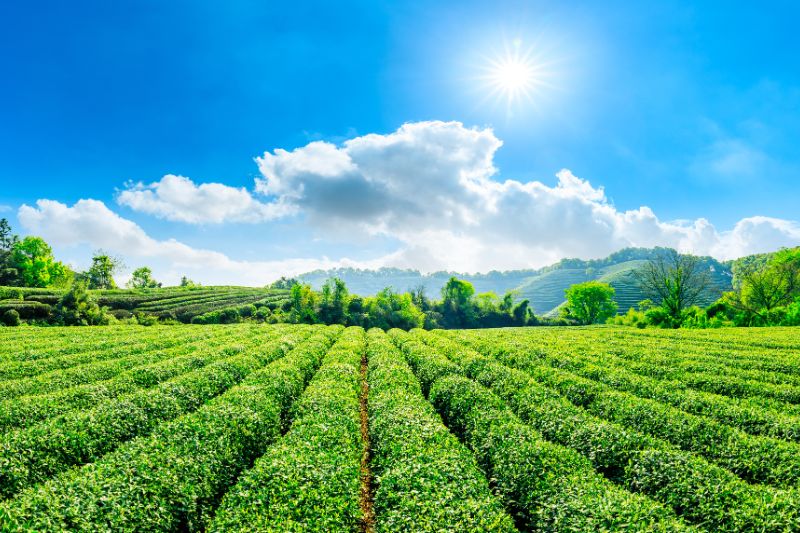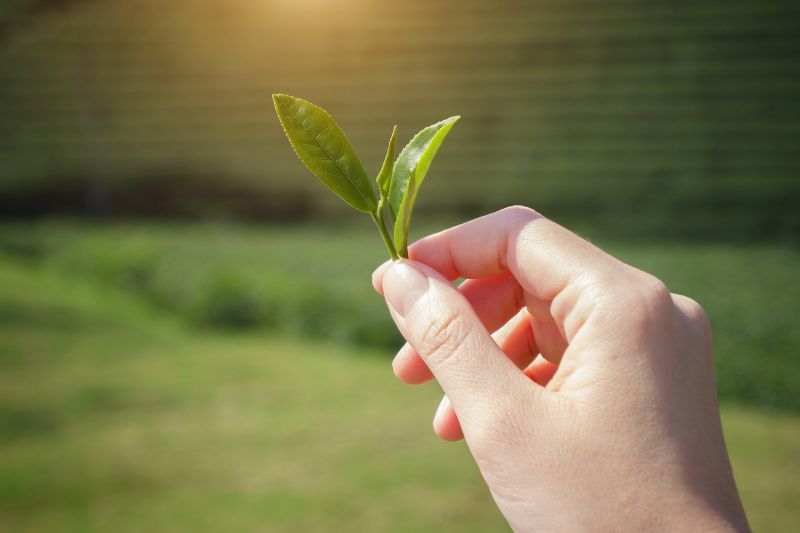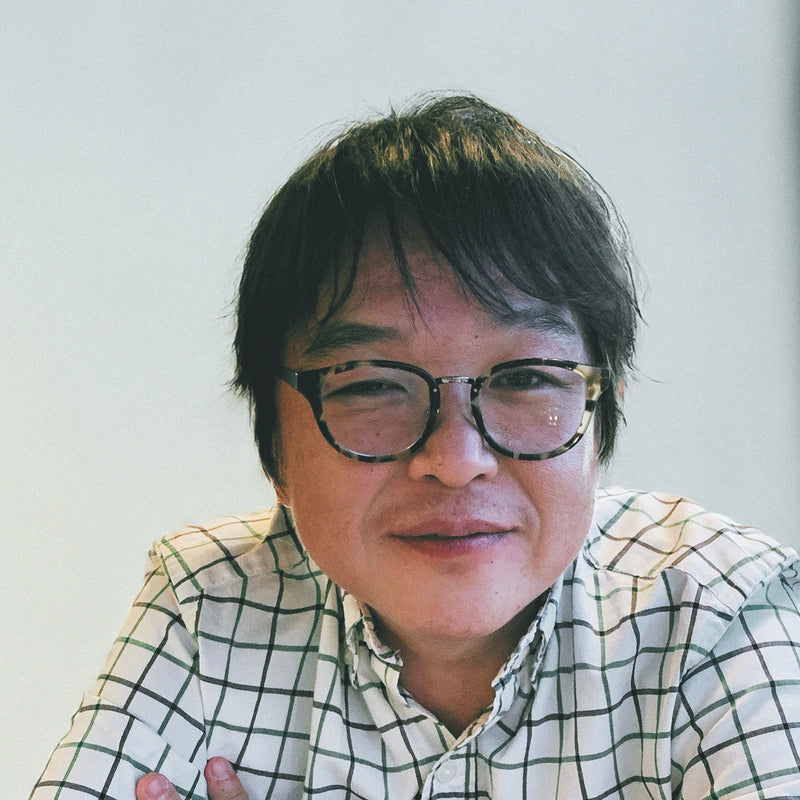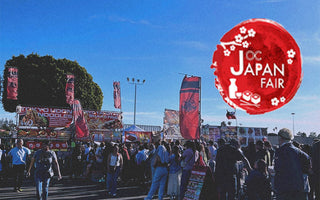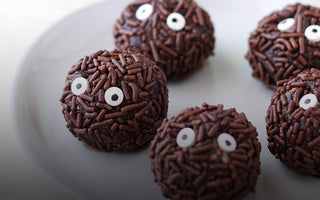Japanese Green Tea Co. is famous for its quality tea, which is grown in sugarcane soil. Kei shows images and videos of how the dirt is being mixed and spread throughout the farm in Shizuoka, Japan, and shares videos of the tea farm shot from a drone in the sky.
Video Script:
- [Presenter (Kei)] Okay, so this is our farm And that's not me, but he is spreading the waters to... farm. And this pole right here is like a... with a fan on the top.
What it does is that, it keeps the air warmer so that, you know, the warm air comes out from the ground and then it shoots down the air.
So that's what the pole does here. And that's our tea. It's looking pretty healthy. You can see. And the differentiation of our tea is what we put in the dirt. And you might have heard that our tea is called 'sugarcane soil tea'.
And this is one of the materials that we put in the dirt. And that's the dirt mountain there and what we do, it's a lot of dirt. So we take the dirt from farm and we transport them from the farm to... using the truck and mix all the natural element including the sugarcane and different material and bring it back. So that's the truck right there. And this is how we mix the dirt.
And this is actually a little video. Let me see if I can turn on the video here. And you can see this is the different components that's in the dirt. And we mix them using the heavy machines like that.
And the reason why the steam you see there is... It's not because it's hot. It's actually doing a chemical reaction between the dirt and different elements, which is fermenting some of the elements and that's the steam.
- [Lady] Is there sugar in that dirt?
- [Presenter] Yeah. Sugar, sugarcane syrup. And we put like 12 different materials in there. And we collaborate with... we research with Shizuoka University. And have been doing for the past 15 years.
We put different elements in a dirt and then after one year try to see the health of the tea plant and the taste. And we change the ... the component to go into the dirt to see what works better and that's going on every year. And that is a little machine to put that dirt into the... On the soil. And this is a little bigger version of it. It's... inside it is a dirt. And that's a heavier version of it with a machine. Now you can see the dirt there.
And this is another video of the dirt coming from the truck into the machine that you saw. So it's a lot of work to maintain the dirt, as you can see. And... This one already has the sugarcane and all the other elements in there. This is before we put the dirt. And this is after.
And traditionally it is called Chagusaba method. And it has been done for a very long time in the history. And what it does is, originally it is for maintaining the dirt and the root from freezing during the winter. So you would be putting like a hay then we started to put different elements, which enhances the taste.
- [Lady] So how... So, what does the sugar and the other elements, how does it change the taste profile of your green tea?
- [Presenter] Yeah, the sugarcane is the main component. And what it does is it makes the taste of the tea, less bitter and less astringent. So you know Japanese tea has that bitterness. It removes that. So that's the most famous part of our tea.
- [Presenter] And of course,
- [Lady] Oh. Okay.
- [Presenter] different elements changes the chemical structure of the component. And that's what we study. But the main part that is famous for is the less bitter and less astringent.
- [Lady] Oh. Okay.
- [Presenter] And that is the... where, you know, we maintain the shape of the tea tree to be this shape. And this is known to be the shape that gets the sunlight the most. So that's why this is how it looks. And that's the tea farm there. And this is for covering the tea.
You may know that Gyokuro and Matcha are called covered tea. We cover the tea leaf before harvesting. And what it does is that tea leaf... Tea becomes kind of hungry for sun. And it produces a lot of different chemical that makes the taste of the tea to taste like that Gyokuro and Matcha, that distinct taste.
And that's the covering process of that. And you can see, we covered that entire thing. And on this side of the screen, you see, is the covered tea. You can see the color is different. This is non-covered tea. So by covering it, because it produces a different chemical, it changes the color as well.
So you'll notice that Gyokuro and Matcha has a lot more vibrant color It's because of that. And this is us making sure that the tea tastes all right. This is a little video that we shot recently using drone.
It's nice with the technology of, you know, like a drone that we can see it easily like this. Ah sorry. But the technology doesn't work well. Sorry about that. Let's see if I can fast forward to where you were watching. There. And you see the fan is moving to keep the air to be downwards. And a lot of them are there. Isn't it pretty?
[Lady] It's very pretty So, yep. That is the... Yeah. That is the presentation.
- [Lady] Oh. Thank you so much.
Get Free Bonus Books

Sign up for free to the Green Tea Club to get advice and exclusive articles about how to choose Japanese Tea, and tips, tricks, and recipes for enjoying Japanese tea.
About the author
Kei Nishida
Author, CEO Dream of Japan
Certification: PMP, BS in Computer Science
Education: Western Washington University
Kei Nishida is a passionate Japanese green tea connoisseur, writer, and the founder and CEO of Japanese Green Tea Co., a Dream of Japan Company.
Driven by a deep desire to share the rich flavors of his homeland, he established the only company that sources premium tea grown in nutrient-rich sugarcane soil—earning multiple Global Tea Champion awards.
Expanding his mission of introducing Japan’s finest to the world, Kei pioneered the launch of the first-ever Sumiyaki charcoal-roasted coffee through Japanese Coffee Co. He also brought the artistry of traditional Japanese craftsmanship to the global market by making katana-style handmade knives—crafted by a renowned katana maker—available outside Japan for the first time through Japanese Knife Co.
Kei’s journey continues as he uncovers and shares Japan’s hidden treasures with the world.
Learn more about Kei

